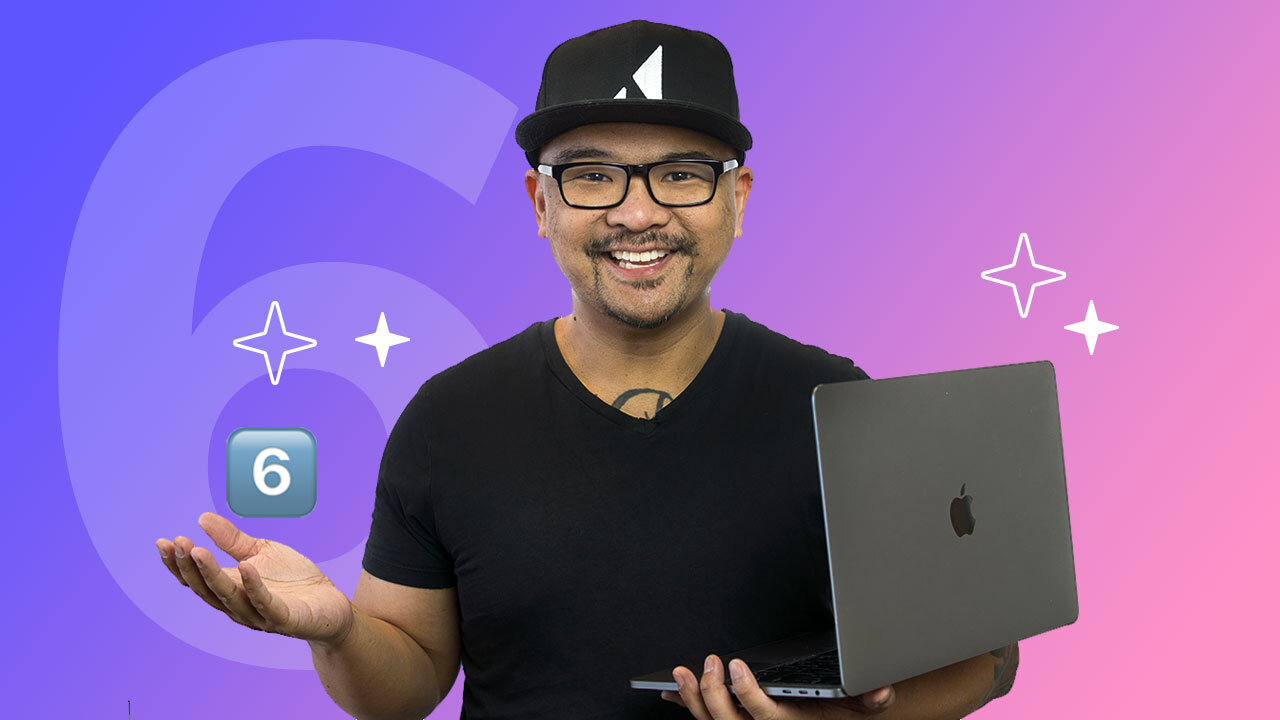As you leave your favorite spot for late-afternoon grub, a man runs up to you and hands you a strange contraption made of metal, rubber bands, and what appears to be melted crayons. “Use this—it made me rich beyond my wildest dreams!” he promises. “Now it’s your turn!”
Before you can register what’s happening, the man is gone. You’re left holding what looks like the botched result of a child’s first welding attempt with no concept of what it is or how to use it. You believe the man’s promise about its great potential— however, you don’t know how to use it to change your life for the better.
Ridiculous? Sure! But so is handing your product off to a new user without offering guidance on how to use it. Users learn by doing, but they need a kernel of awareness to get started. App walkthroughs meet users at the start of their journey through your product and help them unearth valuable features hidden beneath the surface. They foster the good kinds of usage habits in new users that lead to increased retention.
Not sure what an app walkthrough is, does, or looks like? Not to worry. We’ve provided you with an app walkthrough…well, walkthrough to help you optimize your UX, boost retention, and drive product growth.
What is an app walkthrough?
An app walkthrough (sometimes called a “product walkthrough”) serves as a new user’s in-depth, interactive guide to a product. Walkthroughs use UI patterns like tooltips and modal windows to give users a better sense of how to engage with critical components of an app. If you built a P2P payment app like Venmo, you might design a walkthrough that focuses on how to connect the app to the user’s bank account, or how to make and receive payments.
Users only stick with products if they quickly understand their value. Most onboarding processes focus on driving users to their “aha moment,” that moment when users finally understand how a product can positively impact their lives. This helps retain new users immediately, but the singular focus on the aha moment sidelines other valuable features. App walkthroughs bring users directly to these value-laden features, and then educate users on how to use them to get results.
App walkthroughs vs. product tours
Walkthroughs and product tours are both classic onboarding strategies, so it’s easy to conflate the two terms. And it’s true that they’re similar—in fact, you could even think of a walkthrough as a kind of product tour in the same way that a square is a kind of rectangle.
So what’s the difference between a product tour and a walkthrough? A product tour gives users the lay of the land. It shows them where your product’s most important features can be found. Meanwhile, an app walkthrough takes users step-by-step through a set of actions to achieve a specific outcome. Companies typically design app walkthroughs to be more in-depth than product tours.
The 4 best product walkthroughs
A good walkthrough can be hard to nail. If you make it too long, you risk losing the user along the way. Make it too short, and users might not get the product knowledge they need to use your features properly. Too boring? Gone. Too flashy? Distracted.
Here are four companies that provide premium walkthrough experiences for their users.
1. GoToWebinar
GoToWebinar began as an enterprise desktop solution and has become a popular choice for webinar hosting. Recent redesigns have repositioned the platform to include a beautiful web app, a free-trial process, and robust user guidance throughout the product journey.
The GoToWebinar team used Appcues to create a new feature announcement slideout and walkthrough to educate users about their new Transcripts feature. Here’s what it looked like when they launched:





What we like about GoToWebinar’s walkthrough:
- This is a great example of user education beyond user onboarding. These flows target returning users who already knew the platform but were new to the feature.
- It takes users through every click required to access this somewhat “hidden” feature in the future.
- The walkthrough sets good expectations for what users can expect to happen next. It also contains links to support docs, letting users know where to go for more detailed help (if they need it).
- It’s made with Appcues!
2. Asana
Project management tool Asana helps teams organize, track, and manage their work. Asana’s clear, simple interface characterizes the app with playful details and pops of color. A succinct, action-driven onboarding tour walks new users through creating their first task—a clear aha moment for new Asana users.




What we like about Asana’s walkthrough:
- It’s subtle but effective. A series of pulsing hotspots draw attention to specific elements, which familiarizes new users with Asana’s UI. It’s prescriptive without sacrificing a sense of discovery.
- The walkthrough progresses as users take meaningful actions. Each tip requires the user to click the designated element on the page. This action-driven approach guides users through their initial setup and helps them reach their aha moment faster and more confidently than they would on their own.
- The walkthrough ends with a tooltip that shows users where they can find self-service help in the future. Asana gives users the resources they need to resolve their own questions, which reduces both support burden and user frustration down the line.
3. Humanity
Employee management platform Humanity offers a number of different features, but the company wisely chose to focus its new user onboarding on its core functionality: scheduling. The highly prescriptive walkthrough uses action-driven tooltips to remove the guesswork and sequentially guide new users through the actions they must take to achieve value.








What we like about Humanity’s walkthrough:
- There are a LOT of steps to this experience—more than is normally recommended. However, the highly prescriptive, action-driven walkthrough does a great job teaching new users how to use Humanity’s core features. The walkthrough feels thorough without feeling monotonous because it requires user action.
- Humanity took the beginner’s mindset to heart. Non-tech-savvy folks can follow along since gifs and spotlights take all the guesswork out of the process.
- The walkthrough focuses on teaching users how to build out a schedule, but that’s not all. Humanity offers users the chance to take a product tour of the rest of Humanity’s features upon the conclusion of the initial walkthrough. That tour is less in-depth and enables Humanity to let go of users’ hands gradually versus dropping them into a complex product before they’re ready.
4. Pinterest
Visual social media platform Pinterest lets users save, share, and search for images from around the internet. It asks new users to select five or more interests during signup, which results in a personalized feed right off the bat. A very brief walkthrough and user onboarding checklist help them get started from there.





What we like about Pinterest’s walkthrough
- It’s very brief. Pinterest designed the core action around simplicity: just save an image to a board. After customizing your feed during onboarding, there are only three clicks required to save an image to create your first board.
- Pinterest doesn’t sacrifice discoverability. Users can scroll through their feed for as long as they want before clicking on an image that catches their eye.
- A simple checklist makes it clear to new users what their priorities are. We love checklists.
4 steps to creating stunning app walkthroughs
Now that you have an idea of what quality walkthroughs look like, turn your eye to improving the onboarding experience of your own product. These four steps will help you to create a stellar walkthrough, whether your current solution needs an update or you’re creating a walkthrough from scratch.
1. Test your existing feature adoption experience
You can’t fix problems you can’t identify—which is why you should thoroughly examine your UX in its current state. Usability tests offer a hands-on way to evaluate where users get stuck in your app (in real time). Focus groups, surveys, and customer interviews provide additional channels for users to communicate their pain points to you directly.
Companies plugged into their product data will find valuable insights within their analytics. Tools like event tracking enable you to view where customers fall off in the feature adoption experience. Your data will also reveal which events encourage engagement and retention.
You should test your walkthrough after you’ve already built your product tour. A product tour focuses on driving users to the aha moment as quickly as possible. Your app walkthrough needs to complement your product tour, not hinder it. Measure where your UX stands with your tour in place to get a base understanding of how your walkthrough will enhance the user’s experience with your product.
2. Design your app walkthrough
Now you have to address the friction in your product’s adoption process. Create a map of the user’s experience within your app that includes existing pain points. From there, determine which UX patterns, messages, and actions best help the user understand the feature.
And remember, user engagement is the name of the game. The examples we highlighted earlier leverage several reliable UI patterns to build interactive walkthroughs that transform users into active participants. The best ways to engage users during a walkthrough include:
3. Build your solution with app walkthrough tools
UI patterns don’t materialize out of thin air. You’ll need to build the elements of your app walkthrough and schedule them to trigger at the right place and right time.
If you or someone on your team is proficient in coding, you might tackle building these patterns yourself. However, there are easier and less time-consuming ways to build the necessary components of a good app walkthrough. A number of third-party tools exist for building the UI patterns involved, many of which also work well for building product tours.
For example, Appcues enables product teams to build UI patterns for app walkthroughs, product tours, and more without getting caught up in the hassles of coding. A well-designed Appcues-built walkthrough looks striking and feels seamless to users—which is why companies like GoToWebinar trust it to build their own.

4. Test your solution
Build your app walkthrough according to your blueprint—just don’t release it to your users yet. Your original design is gold-star material, but you need to test your new walkthrough thoroughly to ensure it fixes friction without creating new pain points.
First, you should test your walkthrough against itself. A/B testing will help you determine messaging, UI patterns, and even aesthetics that perform highest among segments of your user base. A proper A/B test can determine the best option to use for something as simple as the color of the “Next” button within your modal windows.
After that, you’ll want to release your A/B-tested walkthrough to increasingly larger user groups to determine its viability before releasing it to every user:
- First, test the walkthrough yourself. If your team can’t make it to the end of your own walkthrough, it’s not ready for wider release.
- Next, test the walkthrough with other internal teams. They’ll provide the first fresh look at your app and potentially provide insights you missed.
- Finally, release the walkthrough to a beta group. These users will give you the best sense of how your broader user base will react while offering you time to optimize or fix your walkthrough.
Use the same methods described in Step One to gather and evaluate feedback. Your key indicator of success: the percentage of users who adopted your target feature after taking your new walkthrough. It should increase significantly over the same rate for your original walkthrough.
Use app walkthroughs to illuminate your product’s value
Walkthroughs aren’t necessarily a good fit for every product. For example, part of the joy of a tool like Canva lies in discovering all the possible templates and customizations users can choose from. A walkthrough for these types of tools might feel overbearing and inhibit creativity. Instead, a product like Canva should prioritize discoverability instead.
For most other products, walkthroughs are great for addressing valuable features that require a little more work to uncover and learn. Complex SaaS platforms that require users to take a series of particular actions to realize a core value will benefit from a more prescriptive onboarding experience.









